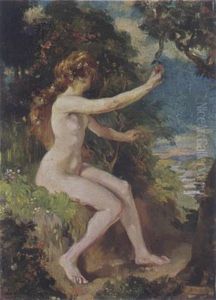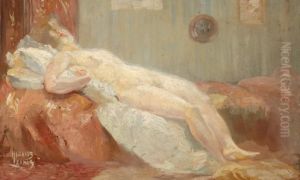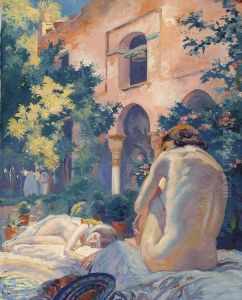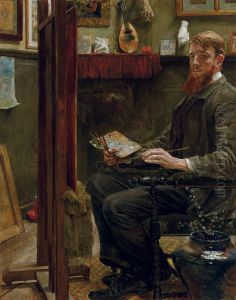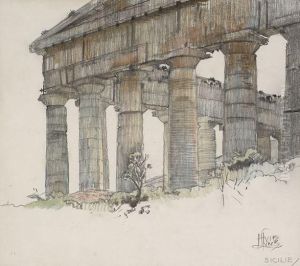Hubert Marie, Huib Luns Paintings
Hubert Marie (Huib) Luns was a Dutch artist, art educator, and art historian, born on August 6, 1881, in Paris, France. His father, J.A. Luns, was a diplomat, which allowed Luns to experience a multicultural upbringing as he moved between France, the Netherlands, and other countries due to his father's postings. This diverse exposure influenced his later work, both as an artist and as an art historian.
Luns was trained at the Rijksakademie van beeldende kunsten (State Academy of Fine Arts) in Amsterdam, where he was instructed by notable teachers such as August Allebé and Antoon Derkinderen. His early works were greatly influenced by his teachers and the broader context of Dutch art at the turn of the 20th century, which was characterized by a transition from traditional to more modernist styles.
As a painter, Luns was known for his portraits, historical scenes, and depictions of everyday life. His style evolved over time, initially reflecting the academic and realistic approach of his instructors, and later incorporating impressionist and expressionist elements. His work was well-received and exhibited in various venues, including the Stedelijk Museum in Amsterdam.
Apart from his painting career, Huib Luns made significant contributions to the field of art education. He was appointed as a professor at the Technical University of Delft and later at the Rijksakademie, where he had once been a student. Luns believed strongly in the importance of historical context in art education, emphasizing the study of classic works alongside practical artistic training.
Luns was also actively involved in the Dutch cultural scene, contributing to discussions and debates on art and national identity. He was a member of several art societies and wrote extensively on art history and contemporary art issues. His publications were influential in shaping the artistic discourse in the Netherlands during his time.
Luns' career was not without controversy. His strong nationalist views and advocacy for a uniquely Dutch art sometimes put him at odds with the internationalist and modernist trends that were gaining popularity among many of his contemporaries.
Huib Luns passed away on June 24, 1942, in Amsterdam. Although he is not as widely known today as some of his peers, his work in the fields of art and education left a lasting impact on the Dutch art world. His legacy includes not only his paintings and writings but also his influence on a generation of Dutch artists who were his students.
